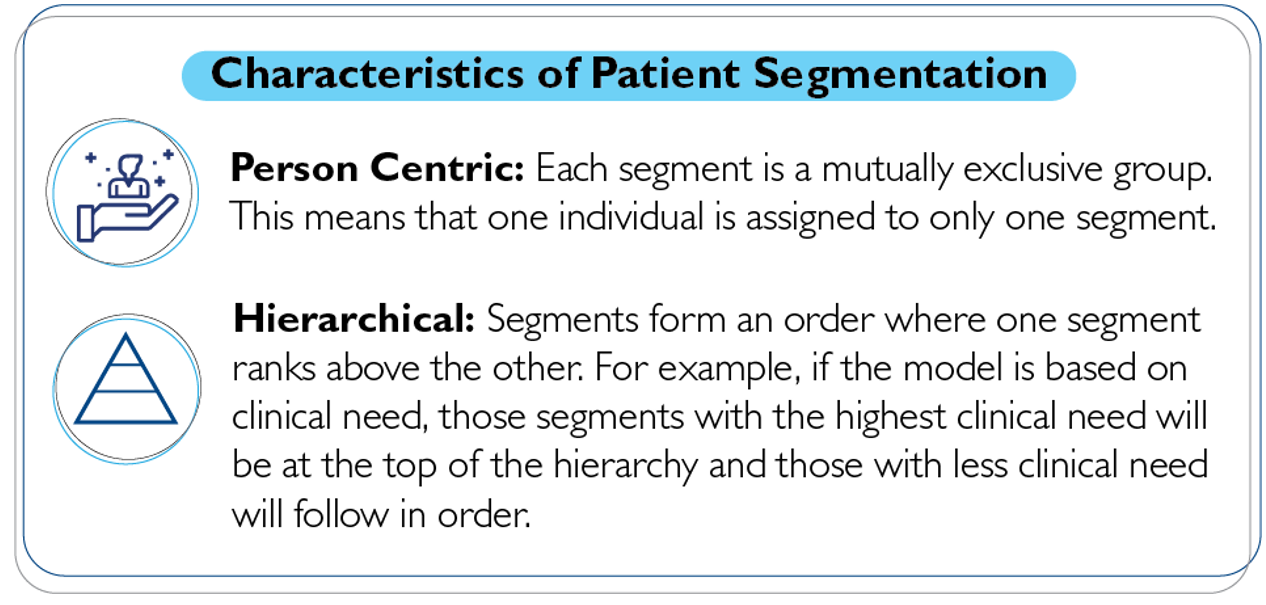

In the population health analytics world, population segmentation is an integral part of data analysis, and the ACG System relies on population segmentation to provide some of its signature insights about a population. But what is population segmentation, really, and how can it be used in specific situations? We’re glad you asked.
At its most basic level, population segmentation separates a population into distinct groups based on specific health needs, individual characteristics or specific behaviors. The goal is to group individuals in a population based on the type of care they need and how often they will need it. This allows clinical care delivery, population health interventions and policies to be tailored for each segment of the population based on their specific health drivers (behavioral, clinical or demographic) rather than a predicted risk score of specific health outcomes, like risk of hospitalization or per-member-per-month cost.
There are a couple key characteristics of a strong population segmentation model:

Segmentation can slice and dice data to reveal specific insights around patient needs, to facilitate targeted health improvement activities. Here are a few:
Population Health Management Strategy: Segmentation can create and drive a population-level strategy by identifying a population’s health care needs and resources required. This approach allows an organization to implement strategies to assist each segment, and create and track segment-appropriate success metrics.
Intervention Targeting: Segmentation can help determine which subset of a patient population is positioned to benefit from a specific intervention, based on enrollment criteria and likelihood of success. This helps ensure a match of the right patient to the right program.
Tailoring Care Delivery: Segmentation can highlight clinical needs of each patient group, to operationalize tailored care delivery based on clinical need, characteristics or behaviors. A segmentation-based approach to population health is often more useful to clinicians than single risk markers.
Ultimately, population segmentation is a hugely helpful data analysis tool that can be used regularly within the ACG System to generate key insights about a specific population. Keep an eye out for next week’s blog post to learn about new innovations in segmentation, fresh from the ACG System team and our colleagues at Bloomberg School of Public Health.
If you want to learn more about how the ACG System can assist with segmentation analysis, reach out to our team at acginfo@jh.edu.
Learn how Slough Clinical Commissioning Group (CCG), which covers a population of 143,000 in the UK, used population segmentation to reduce unplanned hospitalizations by 18% and emergency department visits by 19%. Read the case study.
Follow Us